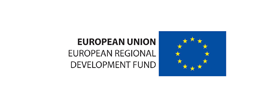|
Student expedition to Chernobyl
Monday, 25 July 2011 15:46
|
|
|
Students of Warsaw University (UW) Physics Faculty, Chemistry Faculty, and Interdisciplinary Centre for Mathematical and Computational Modelling returned from a scientific expedition organized to Chernobyl. Young scientists surveyed radiation levels within the prohibited zone and collected samples to be in depth analysed at home. IPJ and Polish Nuclear Society helped to organize the expedition. 0 0 1 735 4414 Narodowe Centrum Badań Jądrowych 36 10 5139 14.0 96 800x600 Normal 0 21 false false false CS JA X-NONE /* Style Definitions */table.MsoNormalTable {mso-style-name:Standardowy; mso-tstyle-rowband-size:0; mso-tstyle-colband-size:0; mso-style-noshow:yes; mso-style-priority:99; mso-style-parent:""; mso-padding-alt:0cm 5.4pt 0cm 5.4pt; mso-para-margin:0cm; mso-para-margin-bottom:.0001pt; mso-pagination:widow-orphan; font-size:10.0pt; font-family:"Times New Roman";} The "Chernobyl 2011" scientific expedition was organized by "SKFiz" student scientific circle (special interest group) affiliated at UW Physics Faculty and "Fulleren" circle affiliated at UW Chemistry Faculty. The expedition lasted from June 27 to July 5, 2011. Over 30 young scientists visited Chernobyl Nuclear Power Plant (NPP), Pripet and Chernobyl towns, as well as nuclear waste repository situated within the prohibited zone around the NPP. Their main goal was to see how territories around the NPP were looking 25 years after the accident, in particular how natural life was going on in contaminated areas of the zone. Some IPJ Świerk employees also participated. Measurements performed by expedition members included level of radioactivity in soil surface layer and bioaccumulation of radioisotopes in local food. "We have been thinking about such an expedition to the Chernobyl NPP and prohibited zone around it for almost a year" – said Arkadiusz Trawiński, Chairman of the SKFiz group. "The zone located less than a thousand kilometres from Warsaw is still prohibited because radiation within it is still raised in respect to levels before the accident. The expedition could not probably have been organized without organizational support received from Polish Nuclear Society". "We have collected and brought with us some moss samples that will help us to determine contamination of environment with the 137Cs radioisotope" – said Krzysztof Zieleniewski, student at the UW Interdisciplinary Centre for Mathematical and Computational Modelling. "We intent also to evaluate levels of multi-ring aromatic hydrocarbons in air-borne dust" – added student Anna Kelm. Expedition members interviewed also local inhabitants and some Chernobyl NPP staff members. Students had to demonstrate innovative attitude to be able to successfully conduct research within the zone. Among others, they had to adopt a home vacuum cleaner for measurements of air-borne dust, and to equip a tourist fridge (used to store chemical reagents and the collected heat-sensitive samples) with an alternative power source. Such source was necessary since points of access to the Ukrainian national power grid are scarce in the Chernobyl prohibited zone. Lab measurements of the collected samples will take several weeks. "Another objective of the expedition was to practically verify our organizational and experimental skills" – added Arkadiusz Trawiński – "Such skills are important for scientific circle students since we intend to accomplish real-life scientific projects already in a not-too distant future". IPJ Świerk employees who joined the expedition were taking care of participant safety and all scientific issues. "Samples collected during the expedition will be in-depth analysed in home university labs. Radioactivity measurements will be performed in Świerk" – said Łukasz Adamowski from IPJ. In-situ radiation levels were measured with the help of a dedicated mobile gamma spectrometer consisting of a scintillation detector, HV power supply, pulse amplifier, and the "Tukan" multichannel analyser manufactured in IPJ. "The spectrometer helped us to identify radioisotopes that contaminated individual measurement sites" – added Adamowski. "As far as I know none of the previously organized expeditions to Chernobyl had equipment of that kind at their disposal". Radiological safety was an absolute priority. After returning to Poland each of the participants was checked-up in Świerk to make sure that two days spent within the prohibited zone did not result in any internal contamination of his/her body. Dose of ionising radiation received by each participant during the entire expedition was equivalent to a single X-ray medical examination. The expedition proved that simple safety precautions observed by young scientists were sufficient to safely conduct research within the prohibited zone. All participants have pointed out that so much diversified and comprehensive research agenda are very seldom in student expeditions. Members of the group integrated very quickly in spite of various scientific disciplines they represented and various scientific institutions they were affiliated with. Students interested in nuclear power had an exceptional opportunity to practically learn many real-life topics under no stress and without any deadlines, while being able to ask experienced tutors for assistance in case of any doubt. Such a friendly atmosphere is typical for expeditions organized by UW student scientific circles. The expedition was co-financed by UW Physics Faculty, UW Chemistry Faculty and UW Interdisciplinary Centre for Mathematical and Computational Modelling. IPJ covered travel & business expenses of their employees and lent the necessary measurement equipment. This report was worked out by Arkadiusz Trawiński (SKFiz Chairman), Marcin Paweł Sadowski, MSc (IPJ) and Łukasz Adamowski, MSc (IPJ). The report was edited by Dr. Marek Pawłowski (IPJ spokesman and Warsaw University Physics Faculty staff member). |





 Students of Warsaw University (UW) Physics Faculty, Chemistry Faculty, and Interdisciplinary Centre for Mathematical and Computational Modelling returned from a scientific expedition organized to Chernobyl. Young scientists surveyed radiation levels within the prohibited zone and collected samples to be in depth analysed at home. IPJ and Polish Nuclear Society helped to organize the expedition.
Students of Warsaw University (UW) Physics Faculty, Chemistry Faculty, and Interdisciplinary Centre for Mathematical and Computational Modelling returned from a scientific expedition organized to Chernobyl. Young scientists surveyed radiation levels within the prohibited zone and collected samples to be in depth analysed at home. IPJ and Polish Nuclear Society helped to organize the expedition.


